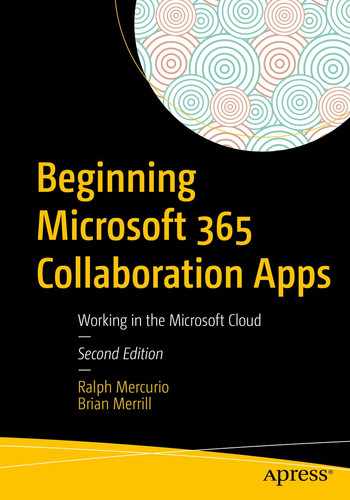In the last chapter on Microsoft Teams, we discussed an application that allows collaboration in an email-less environment. In this chapter, we will explore Yammer, which is similar to but different from Teams.
Microsoft Yammer is very similar to an enterprise social network application that allows colleagues to find relevant information or people, find and use content, and collaborate and join the conversation. This is where the differences become apparent, in my opinion. Yammer is designed for the entire enterprise, while Teams is designed for smaller groups of users who collaborate on specific projects or work efforts, as you explored in the previous chapter.
The story behind Yammer is that it was acquired in the late 2000s and has been around since then in a variety of versions. What is different this time is that it is an integrated, featured application within Microsoft 365, which allows Microsoft to provide value to it, whereas before it was always considered a sort of bolt-on application within SharePoint and didn’t really fit into the SharePoint platform.
Using Microsoft Yammer

Microsoft Yammer

The Yammer Home Feed interface
On launch, you will be presented with a Home Feed screen. This screen will display any updates that occurred in the communities you are a part of. You will also see a listing of communities that you are a part of as well as the option to start a discussion.
Walking Through Yammer
Yammer looks intimidating upon logging in, but once you’re familiar with its interface, it is quite simple. The first area I will discuss is around groups. Communities in Yammer are not the same as Microsoft 365 groups. Yammer groups do not contain an inbox or a SharePoint site or some of the other Microsoft 365 Groups functions you explored in Chapter 4. Yammer communities are like a team in Microsoft Teams; but, as discussed, Yammer communities are meant for the enterprise, where Teams is more suited toward smaller groups of people.
Creating a Yammer Community
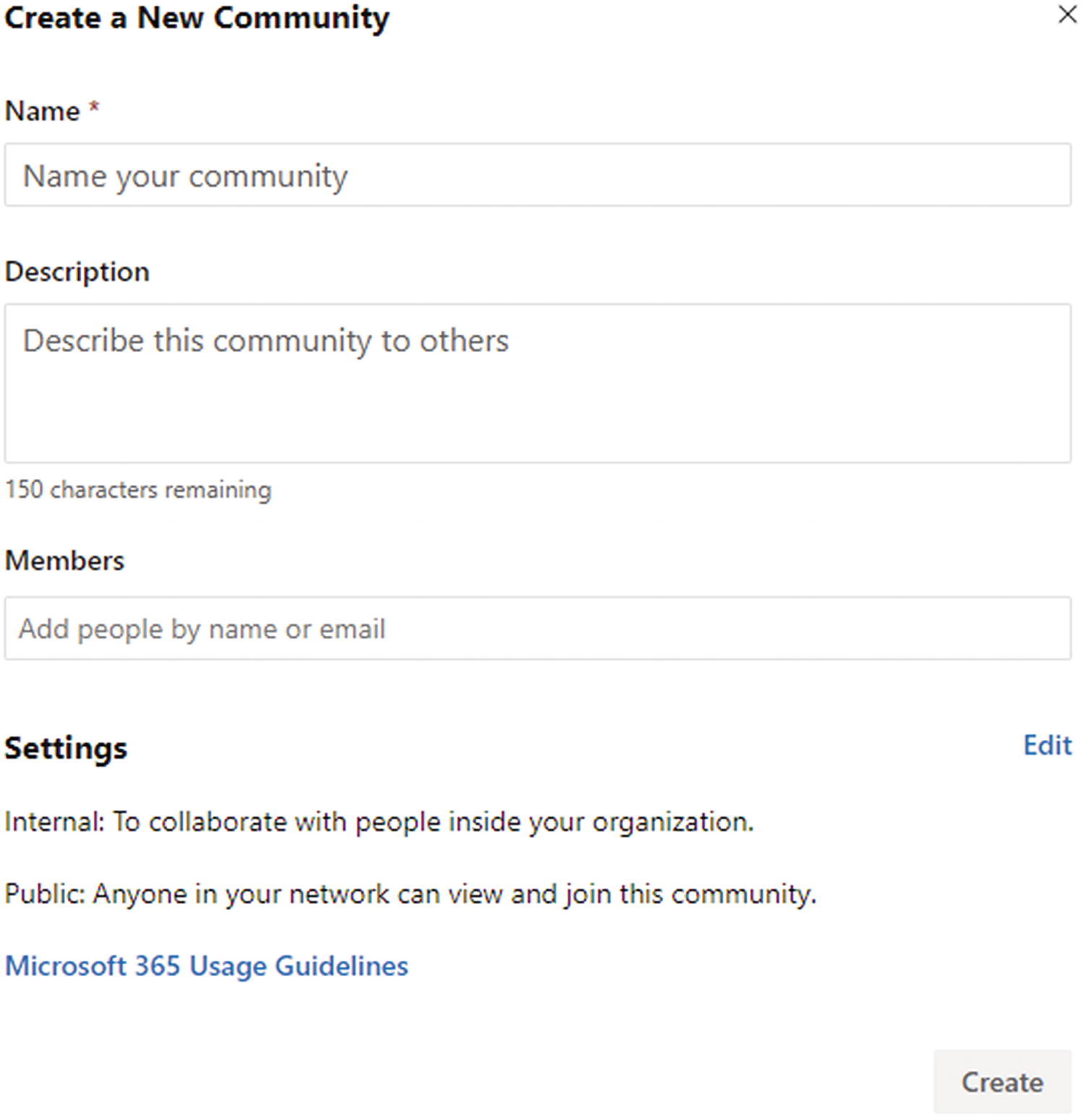
Creating a new Yammer internal or external community
The first thing you will notice is that you have the ability to create two types of communities: an internal community or an external community. Internal communities allow your colleagues to communicate and belong to a community; an external community allows external members to join.
Both communities share a few common fields. The first is “Name,” and it is used to identify and title the Yammer community. The second field is “Description,” and this field gives you the ability to describe the community. The third option is “Members,” where you would add members. The fourth option is “Internal or External.”
Public: Anyone in this network can view conversations and post. This setting allows anyone to join the Yammer community and participate in it. With Yammer, once you have access to the community, you can perform a majority of the actions.
Private: Only community members can view conversations and post. With this setting, you must be sure to add members to the community. You also have the option to allow the community to be visible to all colleagues even though they cannot join the community unless specified.
If External is selected, you will be presented with the same choices as the preceding.
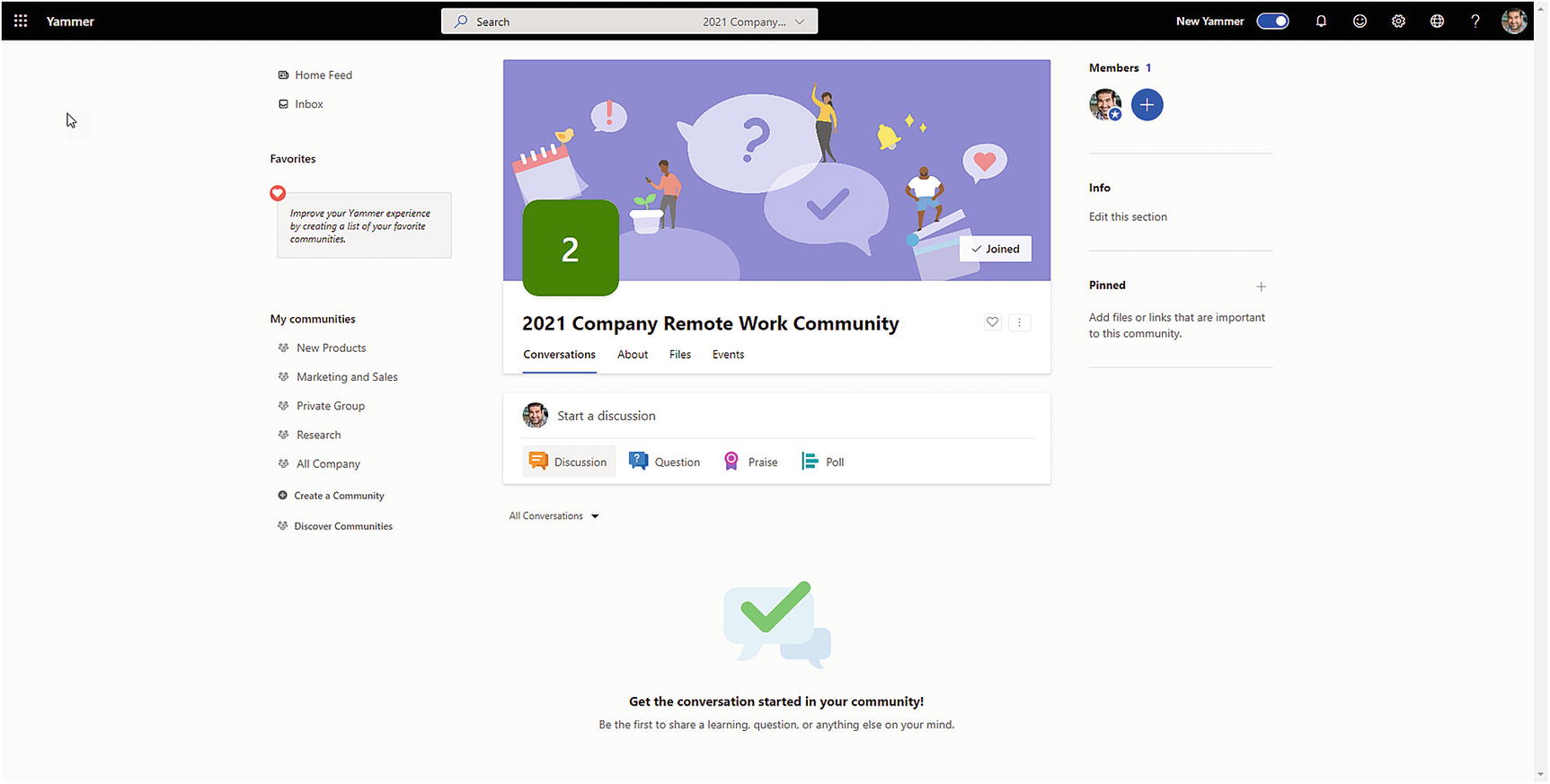
Viewing a Yammer community
Basics of a Yammer Community
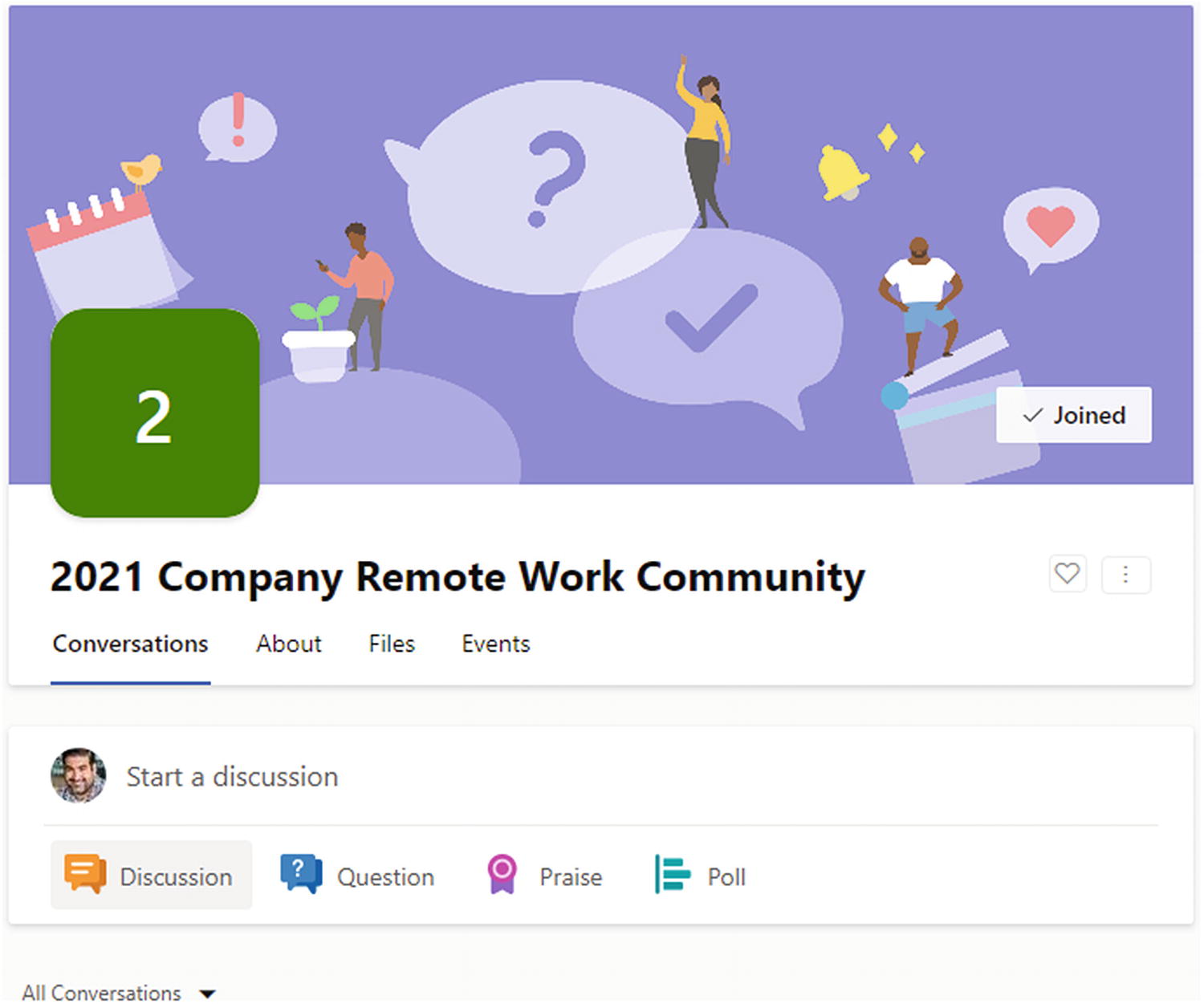
Yammer community options
Conversations: These types of communication (discussions, questions, praise, and polls) are used to facilitate dialog within the group. We will discuss the different types further in this chapter.
Community Insights: This will show data statistics of how many active users have visited the community in the last 28 days and the total number of conversations posted within 28 days. Clicking “See More” will take you to more in-depth statistics about your community.
Members: Will show the members of the community as well as allow you to add more members.
Community Info: Will display the information about the community.
Related Communities: Manually add other communities that are related to the current community.

New file options in a Yammer group
Info: Gives the community owner the ability to add more information about the community. The owner can add rules on postings or files. To add info about a Yammer community, click the link and then the Edit link to provide information. Be sure to save your changes after.
Pinned: You can “pin” links that are relevant to the community in an easily accessible location. Links can also be posted. See Figure 6-7 for more details.

Adding a link to the Pinned section of a Yammer community
Posting to a Yammer Community

Posting to a Yammer community
Discussion: A conversation post to a Yammer community is the simplest of all posts. Type your message in the text box; and if you want, you can also add a gif or a file from Yammer or SharePoint or upload directly from your computer. You also have the ability to notify people of the update by specifying their name in the “Add people” text box. See Figure 6-9 for more details.
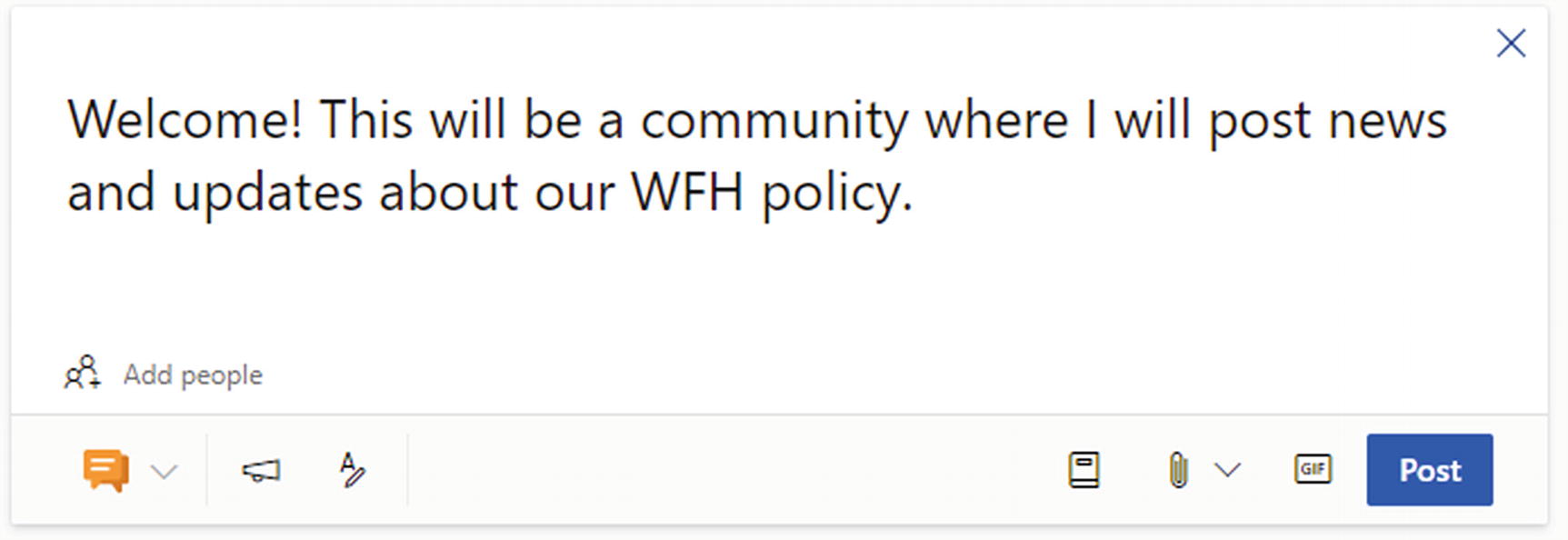
Posting a discussion to a Yammer community
Poll: A poll is akin to a single-question survey (Figure 6-10). For now, you can only post a single question. No other data types are available. It’s similar to an update post because you can also attach a file or notify a person.
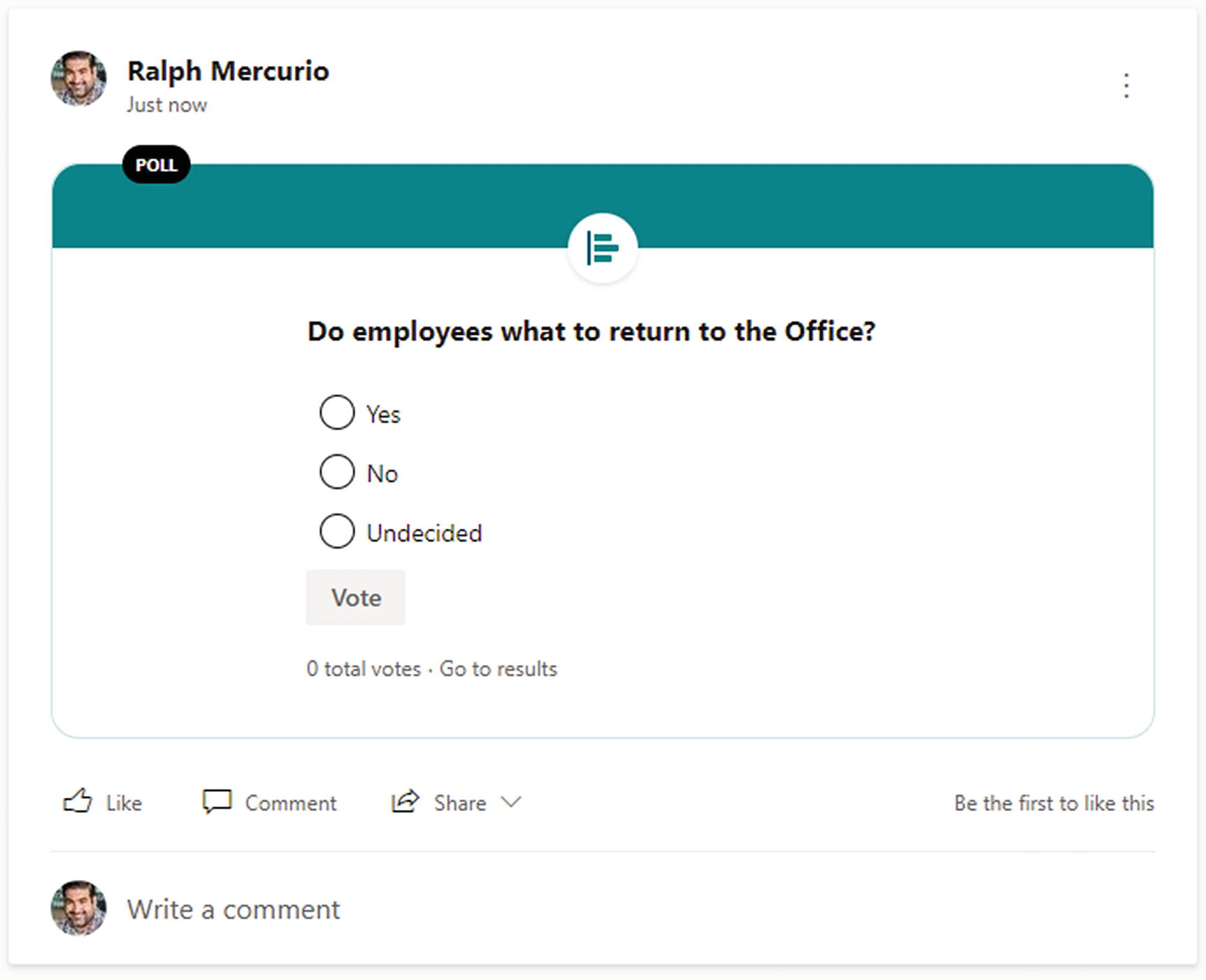
Creating a poll for a Yammer group
Praise: Built upon the update post, but gives you the ability to give your post a little more detail, as shown in Figure 6-11.

Creating a praise post in Yammer
Question: The final post type is a question, as shown in Figure 6-12.

Creating an question post in Yammer
Interacting with Yammer Posts

Options for interacting with posts
To like any of the posts, select the Like icon located under the post. Clicking the icon will change the icon name from Like to Unlike. If you choose to unlike a post at a later date, click the Unlike icon. Commenting on a post is a similar action to liking a post. Click the Comment icon, and a text box will appear underneath the original post. Type your message and choose to notify others, add a file, or post text.

Sharing options for a Yammer post
Within the “Share to Community” modal window, select a community from the “Select a community to post to” link. You can add context to sharing a post by adding your comments, uploading a file, and notifying specific people. In order to share the conversation directly in a private message, select the “Share to Private Message” option. This option requires you to add specific participants because you are sending a private message. You also have the ability to add a gif or upload a file. When you are satisfied with your selections, click “Share” in the lower-right corner to post to a group or send a private message.
If you are the creator of the post, you will also see the vertical ellipsis in the upper-right corner of the post. Clicking the ellipsis allows you to edit your post and correct context or spelling. All edited posts are labeled as edited. You can’t edit a poll post.

Accessing advanced-level control of a post
Inbox
The inbox, located in the upper-left corner, allows you to send private messages as well as receive notifications. To create a private message, select “New Private Message” in the upper-right corner of the inbox.

Creating a private message
Sending a message to another colleague(s) is similar to posting an update; the difference is you need to select the colleagues to send the message to. Once you select the colleague(s), type your message, attach any items if needed, and click “Post.”

Moving a private message to a community
Once the message is moved, it cannot be undone. Also be aware if your message contains sensitive or confidential information; it will be visible to all members of the group.
Yammer Mobile App
Microsoft released a mobile version of Microsoft Yammer, as it did for almost every one of its core products (SharePoint, Planner, OneDrive, Teams, etc.). The mobile application is supported on both Android and Apple platforms and is available from the respective app stores.
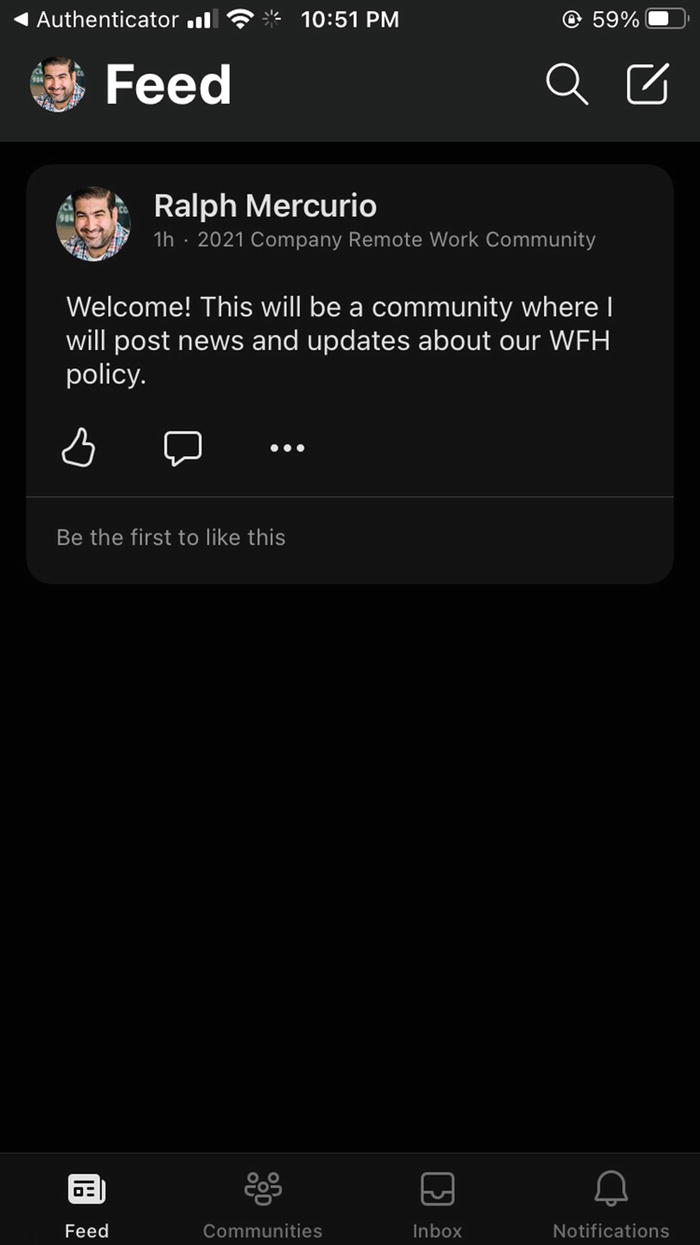
Accessing the Yammer mobile application
On the Yammer mobile app, you will see a list of your communities; you also have the ability to add and discover more groups. Along the bottom of the application, you can navigate to the Feed, Inbox, and Notifications.

Posting to a Yammer group in the mobile app
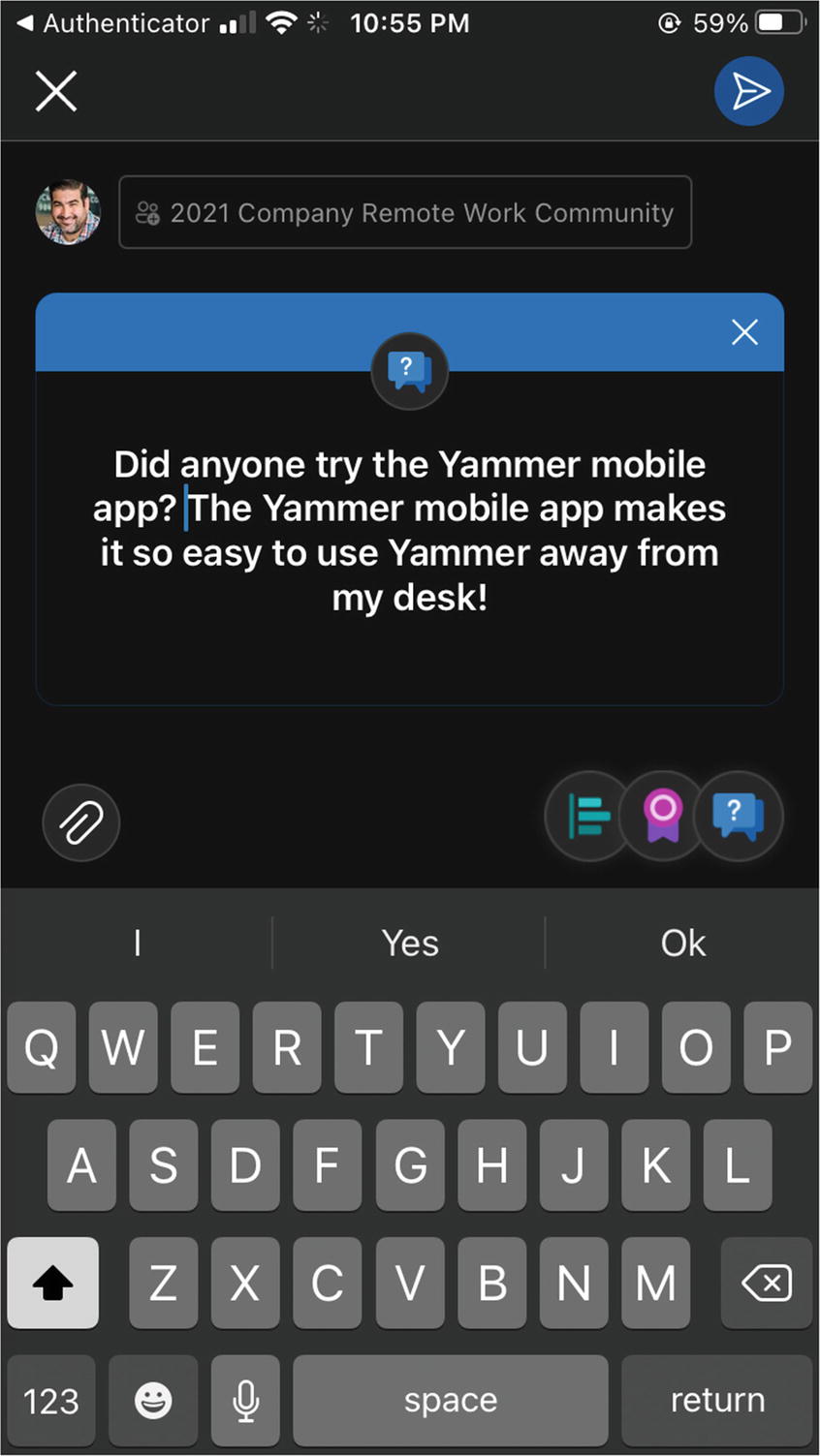
Create a different type of Yammer postp
Business Retrospective
I want to touch base on a past experience concerning Yammer and a business problem that the executives wanted to solve. The company was dinged by their employees on the yearly employee survey for not being transparent with information, so the company wanted to create a culture of employee empowerment. After a discussion with them, they agreed to green-light Yammer as a PoC (Proof of Concept). Part of winning them over was to show that Yammer had the features needed to solve the issues and increase employee engagement.
Part of the success of the project was to ensure that the executives would be responsible and willing to post updates and engage with employees. I would love to tell you that once we configured Yammer in the enterprise, created a public community, and had the executives begin posting short updates about what the company was going through, user adoption shot through the roof and employees felt they were informed.
That didn’t happen, and it would appear on the surface that we failed. However, we noticed something odd: we engaged at the wrong level in the organization. Having executive buy-in was needed, but employees felt they couldn’t relate or shouldn’t respond to upper management.
Because of this, we started to engage other managers, and Yammer became a more widely used platform. A year later, the yearly employee satisfaction survey showed that they were moving toward their goals of disseminating information and engaging employees.
Summary
A common thread throughout this book is that Microsoft has shifted from providing a single application to solve the many collaboration challenges we face to building applications that allow us to choose the best ones for our needs.
Yammer is similar in many ways to Microsoft Teams but is geared toward connecting colleagues at the enterprise level and not on the project or team level. The key to Yammer is to create communities, public or private, and to ensure that all users have access to the Yammer network. For this to happen, users can be imported directly from Microsoft 365 with the aid of a Yammer administrator.
The key to working with Yammer is to ensure that posts are made, whether they are updates, polls, praises, or announcements, and that those posts are replied to. This is important because without any content or current updates, users won’t see the value in contributing to or using Yammer.
In this chapter, I covered the basics of Yammer including communities, users, interacting with posts, and the Yammer mobile application. In the next chapter, I will discuss another cornerstone of Microsoft 365, the Office 2019 suite including Outlook, Word, Excel, OneNote, and PowerPoint.
